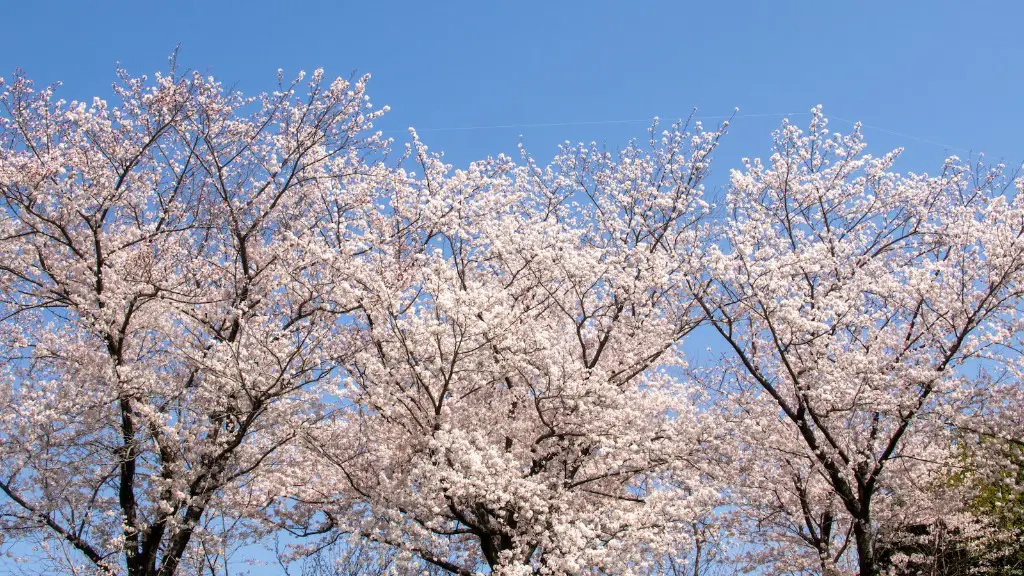Many gardeners wonder why lemon tree leaves turn yellow. To answer this question, we must first consider the factors that can influence the color of a leaf. Lemon tree leaves turn yellow when the tree is not receiving enough light, being overwatered, and is suffering from nutrient deficiencies.
When a lemon tree does not receive enough light, the result is a yellowing of the leaves. Without adequate light, the tree is not able to photosynthesize enough to produce chlorophyll and the leaves will begin to yellow. Moreover, if a gardener overwaters a lemon tree, it can lead to yellowing leaves due to root rot and fungal diseases. Finally, certain nutrient deficiencies can also result in yellowing leaves, as the tree cannot obtain all the nutrients it needs to produce healthy foliage.
It’s important to note that too much light can also cause yellowing leaves. A lemon tree that is receiving too much direct sunlight can suffer from sunburned or heat-stressed leaves. This can cause yellow spots or patches on the leaves and the leaves can eventually turn yellow.
In order to prevent yellowing leaves, gardeners should ensure their lemon trees receive enough but not too much light, avoid overwatering, and maintain balanced soil nutrition levels. Lemon trees prefer a sunny location with at least six hours of direct light every day, and should only be watered when the soil begins to feel dry. Finally, fertilizing with a balanced fertilizer every few weeks can help to ensure the tree is not suffering from a nutrient deficiency.
In conclusion, lemon tree leaves turn yellow for a variety of reasons, including inadequate light, overwatering, and nutrient deficiencies. The key to preventing yellowing leaves is to provide the tree with enough light, water appropriately, and maintain balanced soil nutrition levels.
Cultivation Practices
Apart from providing the right amount of light, water, and nutrition, it is also necessary to follow good cultivation practices in order to maintain healthy lemon tree foliage. Pruning is important for the health of a lemon tree, as it removes damaged or diseased branches and encourages new growth. Additionally, spacing plants appropriately is important to allow for proper air circulation. Finally, mulching can help to conserve soil moisture and keep soil temperatures consistent.
Common Diseases
Unfortunately, lemon trees are prone to various diseases that can lead to yellowing and/or dropping of leaves. Bacterial diseases such as citrus canker, bacterial spot, and greasy spot can all cause leaves to yellow, curl, and drop. In addition, fungal diseases such as Alternaria leaf blight, anthracnose, and Phytophthora root rot can lead to yellowing and dropping of leaves. Proper fungicide treatments should be applied to prevent and control these diseases.
Insects and Pests
Insects and pests can also cause yellowing of lemon tree leaves. The most common insect pests include aphids, mealybugs, thrips, scale, and mites. Early detection and proper insecticide treatments are key for controlling these pests. In addition, psyllids and some other sucking pests can extract plant sap from the leaves and cause yellowing to occur. Be sure to properly identify these pests in order to properly treat them.
Excessive Heat
Finally, excessive heat can also cause yellowing leaves on a lemon tree. When temperatures exceed 95-100 degrees Fahrenheit, lemon trees may experience heat-stressed leaves. If this is the case, the leaves will turn yellow and then eventually drop off. In order to avoid heat-stressed leaves, make sure to provide adequate shade and air circulation.
Fertilizers
In order to keep lemon trees healthy, it is important to use an appropriate fertilizer. Fertilizers should be applied in spring, summer, and fall to provide the tree with the necessary nutrients. Lemon trees should be fertilized with a balanced 8-8-8 NPK fertilizer or an 8-9-9 NPK fertilizer for younger trees. Additionally, it is often beneficial to use a liquid fertilizer every few weeks to provide additional nutrients.
Harvesting Lemons
When it is time to harvest lemons, it’s important to make sure the lemons are ripe. Lemons are ready to pick when they are bright in color, firm to the touch, and heavy for their size. Additionally, if the fruit is slightly yellowing and the flesh is soft, it is ready for harvest. It is important not to pick green unripe lemons, as they will not ripen and will not have the same flavor or texture.

